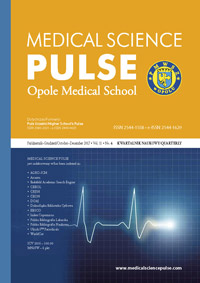Care plan of a child with myelomeningocele and coexisting hydrocephalus – case study
Care plan of a child with myelomeningocele and coexisting hydrocephalus – case study
Author(s): Patrycja Nicpoń, Ewa RadwańskaSubject(s): Health and medicine and law
Published by: Państwowa Medyczna Wyższa Szkoła Zawodowa w Opolu
Keywords: patient; care plan; developmental defect; myelomeningocele
Summary/Abstract: Background: Due to the advances made by children who are born with myelomeningocele (open spina bifida),they have increased life expectancies. However, it is still important to understand the causes of neural tubedefects that are presently poorly understood. The key period for the development of the neural tube is the firstmonth of pregnancy, when a mother is often unaware of her pregnancy. That is one reason why the folic acid supplementationis advised for women of childbearing age, so that even an unborn child is not at risk of defects.Aim of the study: To discuss the substance of the myelomeningocele disease and to propose an exemplarynursing care plan for the patient with this type of spina bifida, who has been treated in hospital since birth.Case report: The case study is a description of a 2.5-year-old boy who was born with a myelomeningocele inthe thoracic-lumbar area with co-existing hydrocephalus. Plastic surgery of myelomeningocele was performedat the first and second day of life. Rehabilitation of the child started immediately after healing of the wound.At 9 weeks of age, a ventriculoperitoneal shunt was implanted. Additionally, the decision was taken to installa tracheotomy tube. During the child’s stay in the ward it was necessary to double-plasty the wounds on hisback. Due to the persistent symptoms of gastro-oesophageal reflux, the decision was taken to perform the antirefluxand exposure of gastrostomy procedure. Also exteriorization of vesicocutaneous fistula was performed,due to recurring infections of the bladder due to neurogenic bladder. Currently, the boy still requires mechanicalventilation. He is fed by gastrostomy (PEG). He in quite good contact with the environment, he smiles, recognizesrelatives and reacts to strangers.Conclusions: It is important to recognize the patient’s deficits/dysfunctions and to place appropriate nursingdiagnoses. The scheduled, suitable for nursing interventions are subject to systematic evaluation and enableadjusting the care plan to the changing situation. Unfortunately, some damage in myelomeningocele is irreversible,nevertheless the professional nursing care makes it possible to meet the needs of a patient, whereas thelevel of proper care and observation of a child significantly improves its quality of life.
Journal: Medical Science Pulse
- Issue Year: 11/2017
- Issue No: 4
- Page Range: 54-60
- Page Count: 7
- Language: English

